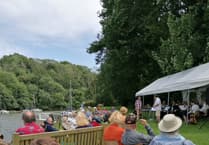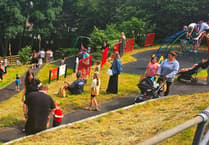EACH week, hundreds of planning applications come before Cornwall Council’s planning department, seeking to win approval for various plans right across the Duchy.
These plans can comprise of a number of different reasonings – ranging from permission to replace windows or listed building consent ranging up to large house building developments or changing of use of a building, for instance, from an office to a café, or flats.
Within this large and often complex system, there are a number of formats from which planning advice and approval can be sought.
These range from full applications where all the details which comprise a proposed development or work to a building are submitted, to outline applications, where further details are yet to be confirmed, for example, an outline application with reserved matters for appearance may not confirm the final proposed development but rather seek permission in principle.
An example of this is one for an outline permission for 20 dwellings on land with reserved matters for appearance and scale; the reserved matters would require further permission later for their inclusion.
Other types of applications include pre-application advice requests, where would-be developers submit often outline proposals to a local authority to ascertain whether it is likely to gain support or not prior to submitting a planning application.
The vast majority of applications are decided by planning officers employed by a local authority under ‘delegated powers’, meaning they do so on behalf of their employer, however, some applications are ‘called in’ by local councillors to be discussed at an area’s strategic planning committee meeting, meaning the final decision rests with a committee of councillors.
Disused church could become dwelling
A CHURCH could become a dwelling in plans submitted to Cornwall Council.
A pre-application advice enquiry seeking the council’s view on the possibility of converting the now-disused Landulph Methodist Church, Landulph, Saltash has been submitted to the planning authority.
The building’s owners, the trustees of South East Cornwall Methodist Circuit say that the church, which was built in 1874 is surplus to their requirements and required ongoing maintenance of the building which has been disused since 2018 is beyond their financial means.
In the application, which is seeking a change of use from class D1 (Place of Worship) to C3 (Dwellinghouse), the trustees said: “The Church has been generally well maintained. However, regular services ceased in May 2018, and the building has not been used since June 2018. In order to avoid deterioration, it would be beneficial for the building to be in regular use. Currently there is low demand for a D1 Place of Worship in the local area, and conversion to a C3 Dwellinghouse would enable the building to continue its life with useful function, rather than remaining derelict. The building is suitable for conversion to a dwellinghouse, which could be achieved with minimal impact to the external appearance of the church
“Landulph Methodist Church is set on the outskirts of Cargreen in an Area of Outstanding Natural Beauty (AONB).
“The church is now redundant, and the trustees wish to sell it with the benefit of a Planning Pre-Application for conversion to a single dwelling. External walls are of limestone rubble with stone dressings to the church and brick dressings to the Sunday school. Internally they are plastered. The stone dressings to the outside have at some time in the past been rendered, possibly due to deterioration of the underlying stone. These are best left undisturbed though there are some cracks to the entrance door moulding that could be repaired with a flexible filler prior to redecoration.
“The aim of the conversion is to enable a new use that ensures the future of the building whilst preserving as much of its character and history as possible. As it will constitute a change of use, in terms of the Building Regulations there are a number of issues that will need to be addressed. Although its listed status will provide a degree of exemption, it will be good practice to adhere to the regulations as closely as possible. The underlying principle is to avoid any damage to the fabric of the building and ensure that any new works are ‘undo-able’.”
The trustees of the church added that the future of the church’s striking organ will be secure if the plans go ahead, continuing: “The organ is scheduled to be restored and used in another church. The pews will be salvaged for resale and the pulpit and one or two of the pews could be reused in the entrance and hall to preserve the heritage of the church.
“If a change of use cannot be made the Methodist Circuit Trustees will be saddled with ongoing costs to maintain and repair a building that they have no use for. The best way to ensure the future of the building is to transfer the care to someone who has a vested interest in maintaining it hence this application to convert it to a single dwelling. The principal rationale of this design is that it respects the architectural detailing and history of the building, and the change of use ensures that it will continue its life with a useful function. The intention is to preserve and uplift the quality of the property, maintaining its heritage assets and leaving it in a better state than it was found.”
Poor quality barn unlikely to be converted
PRIOR approval for the conservation for part of an agricultural shed into a dwelling is unlikely to be approved by Cornwall Council.
Mr and Mrs Borthwick applied to the local authority for pre-application advice for the conversion of one end of a barn into a two to three bedroom, off grid, single floor dwelling on land to the north of Kit Hill Farm, Launceston Road, Callington.
In the response by a case officer at Cornwall Council’s planning department, it was noted that it was unlikely that conversion of part of the building would be supported, either through the Class Q prior approval process, whereby redundant agricultural buildings can be converted in certain circumstances or if it was through a full planning application.
The council told the applicants: “The existing building is not considered to be of any architectural merit and is not considered to afford a positive contribution to the character of this rural area. It would appear from google imagery that the barn may be visible from the access lane/highway to the east, however public views of the site would appear to be relatively limited. Nonetheless, this does not mean that the conversion of this building would lead to an 'enhancement within the immediate setting'.
“I am of the view that the conversion of the dwelling via a Class Q route would not gain consent as outlined above. I am also of the view that the building would not accord to the criteria within Policy 7 and would not lead to an enhancement to its immediate setting, regardless of any design offered.”
• Keep up to date with the latest planning applications and other statutory notices (such as alcohol licensing and probates) that affect where you live by visiting our online Public Notice Portal – be the first to know by visiting www.publicnoticeportal.uk/cornish-times-series
.png?width=752&height=500&crop=752:500)




Comments
This article has no comments yet. Be the first to leave a comment.